Q
What is the Engine in Suzuki Jimny?
The Suzuki Jimny is equipped with a K15B 1.5 - liter naturally aspirated engine. The cylinder arrangement is an in - line 4 - cylinder, and the intake form is naturally aspirated (NA). Its maximum power is 75 kilowatts, which can be achieved at 6000 revolutions per minute. The maximum torque is 130 N·m, reaching the peak at 4000 revolutions per minute, providing a moderate and stable power output.
This engine is paired with a 4 - speed automatic transmission, and the driving modes include front - wheel drive and all - wheel drive for you to choose from. In actual driving, the naturally aspirated engine has a linear power output and is easy to operate. On urban roads, the power can meet the needs of daily commuting. In off - road conditions, it can also provide a certain amount of power support. Moreover, the naturally aspirated engine has a relatively simple structure and mature technology. The later maintenance cost is low, and it has high stability and reliability, which can save car owners a lot of trouble in long - term use.
Special Disclaimer: This content is published by users and does not represent the views or position of PCauto.
Related Q&A
Q
What is the TYRE pressure for a Jimny 2024?
The recommended standard tire pressure for the 2024 Jimny usually ranges between 2.2 and 2.4 bar (about 32 to 35 psi). The specific value may vary slightly depending on the vehicle configuration, tire model, or load conditions. It is recommended to refer to the official label on the driver's door frame or the inside of the fuel tank cap.
In the hot climate of Malaysia, the tire pressure will expand slightly as the temperature rises. Therefore, it is safer to inflate the tires to the lower limit of the recommended value (such as 2.2 bar) when the tires are cold. The pressure can be appropriately increased to the upper limit during long - distance driving or when the vehicle is fully loaded.
Regularly checking the tire pressure can not only improve fuel economy and handling stability but also prevent overheating or excessive wear of the tires caused by insufficient tire pressure. If non - original specification tires (such as AT all - terrain tires) are installed, the pressure needs to be adjusted according to the tire manufacturer's recommendations. The tire pressure can also be moderately reduced on different road conditions (such as sand or mud) to increase the contact area, but the standard value needs to be restored before driving on the highway.
It is recommended to check the tire pressure at least once a month with a mechanical tire pressure gauge. Avoid relying solely on the warning function of the in - vehicle TPMS, as the system usually only triggers an alarm when the tire pressure deviates by more than 15%.
Q
How big is the fuel tank on a Jimny 2024?
The 2024 Suzuki Jimny comes with a 40-liter fuel tank. This size is quite practical for a compact off-road vehicle, offering a decent driving range for both city commuting and light off-roading. For users in Malaysia, such a fuel tank capacity can also reduce the hassle of frequent refueling during long-distance drives or when exploring remote areas.
As a small SUV known for its durability and off-road performance, the Jimny also has relatively good fuel economy. Paired with a 40-liter fuel tank, it can usually provide a driving range of about 400 - 500 kilometers, depending on driving conditions and road situations. It's worth mentioning that although the Jimny's fuel tank capacity may not be as large as that of some full-size SUVs, its lightweight body and efficient power system make it more fuel - efficient, which is very suitable for the diverse road conditions in Malaysia, whether it's the congested city roads or the rough rural terrains.
If you often take long - distance trips, it is recommended to plan the locations of gas stations in advance, especially in remote areas like East Malaysia, to ensure a smooth journey.
Q
How much oil does a Jimny 2024 take?
The oil capacity of the 2024 Suzuki Jimny is approximately 3.7 liters (based on the original manufacturer's recommended oil change volume). However, the exact amount may vary slightly depending on the engine model and whether the oil filter is replaced. It is recommended to refer to the owner's manual or consult an authorized service center for accurate data. In the hot climate of Malaysia, it is advisable to use synthetic oil with a viscosity grade of 5W - 30 or 10W - 40 as recommended by the original manufacturer. This type of oil can better handle high - temperature operating conditions and protect the engine. Regular oil changes are particularly important for maintaining the engine life of off - road vehicles like the Jimny. Generally, the oil needs to be changed every 5,000 to 10,000 kilometers or every 6 months (depending on driving conditions). If you often go off - road or take long - distance trips, you can appropriately shorten the maintenance interval. It should be noted that when changing the oil, you should also check the condition of the transmission oil, differential oil and other transmission system fluids, which is also crucial for the maintenance of four - wheel - drive models.
Q
What is the mileage of Jimny 2024?
The fuel consumption of the 2024 Suzuki Jimny in the Malaysian market varies depending on the powertrain configuration. It is equipped with a 1.5-liter K15B naturally aspirated engine paired with a 4-speed automatic or 5-speed manual transmission. According to official data, the combined fuel consumption is approximately 6.4 - 6.9 liters per 100 kilometers (the specific figures may vary slightly depending on driving conditions or configurations). Thanks to its lightweight body and body-on-frame structure, this small off-road vehicle optimizes fuel economy while maintaining off-road performance, making it suitable for the diverse road conditions in Malaysia.
It's worth noting that the actual fuel consumption can be affected by factors such as driving habits, road conditions (e.g., city congestion or off-road terrains), and vehicle load. It is recommended that car owners refer to the energy-efficient vehicle guide of the Malaysian Energy Commission (ST) or obtain personalized data through official test drives. Among vehicles in the same class, the Jimny strikes a good balance between fuel consumption and off-road capabilities. If you're looking for lower fuel consumption, you can also consider hybrid SUVs, but you need to weigh the priorities between off-road performance and fuel efficiency. Regular maintenance, such as replacing the air filter and checking tire pressure, can help keep the vehicle in its best fuel consumption state.
Q
What is the fuel consumption of the Jimny 2024?
The fuel economy figures of the 2024 Suzuki Jimny vary slightly depending on the model and drivetrain. According to official data, the combined fuel consumption of the manual - transmission model is approximately 6.7L/100km, while that of the automatic - transmission model is slightly higher, around 7.0L/100km. These figures may fluctuate in real - world driving due to road conditions and driving habits.
As a classic compact off - road vehicle, although the Jimny has a small body, it features a ladder frame and a body - on - frame design. This structure provides excellent off - road capabilities but also slightly increases fuel consumption. However, it is still fuel - efficient compared to other off - road vehicles in the same class.
For Malaysian consumers, the Jimny's fuel consumption performance is quite practical, especially suitable for daily city commuting and light off - road adventures on weekends. Moreover, with the diverse road conditions in Malaysia, the Jimny's on - demand four - wheel - drive system can automatically switch between two - wheel drive and four - wheel drive modes, optimizing fuel efficiency while ensuring passability.
It's worth noting that fuel consumption can also be affected by factors such as tire selection, vehicle load, and air - conditioning usage. It is recommended that owners perform regular maintenance to ensure optimal fuel economy. If you're looking to achieve even lower fuel consumption, consider smooth acceleration and make reasonable use of the cruise control function. These driving techniques can help further reduce fuel consumption.
Q
How many cc is the Suzuki Jimny 2024?
The 2024 Suzuki Jimny in the Malaysian market is equipped with a 1.5 - liter naturally - aspirated four - cylinder gasoline engine with a displacement of 1462cc. It has a maximum power of about 102 horsepower and a peak torque of 130 N·m. It is mated to a 5 - speed manual or 4 - speed automatic transmission, continuing the classic off - road performance and compact body design of this model. Although this car has a relatively small displacement, thanks to its ladder - frame structure, part - time four - wheel drive system and the advantage of a short wheelbase, it performs nimbly in Malaysia's multi - terrain environment, making it especially suitable for urban commuting and light off - road requirements.
It's worth noting that the displacement design of the Jimny balances fuel economy and power output, meeting the practical needs for small SUVs in Southeast Asia. At the same time, Malaysian consumers should be aware that due to the adjustment of emission standards, the diesel version of this car has been cancelled, and only gasoline power is available across the entire lineup. If you're considering modification or long - distance off - road driving, it is recommended to pay attention to the maintenance plans recommended by the original manufacturer to ensure its durability.
Q
Is the Suzuki Jimny 2024 petrol or diesel?
The 2024 Suzuki Jimny is only available with a gasoline version in the Malaysian market. It is equipped with a 1.5-liter K15B naturally aspirated engine, paired with a 5-speed manual or 4-speed automatic transmission. No diesel models have been launched. This classic small off-road vehicle continues the body-on-frame structure and three-link rigid axle suspension. Its part-time four-wheel drive system (with low-range gears) and lightweight design are particularly suitable for Malaysia's multi-terrain environment, including rainforest sections and urban driving. The gasoline power option also meets the local fuel supply system and maintenance convenience.
It's worth noting that the Jimny's compact size (less than 3.7 meters in length) makes it an ideal choice for navigating the narrow streets of Kuala Lumpur. Meanwhile, its ground clearance of 210 millimeters and approach/departure angles of 37 degrees/49 degrees still lead the class. Although it doesn't use turbocharging technology, this engine has been specially tuned to deliver abundant torque in the low-speed range, which is particularly important for users who often face steep slopes or muddy roads.
Malaysian consumers can also choose to equip the original off-road kit (such as additional chassis guards). This model continues the brand's iconic square-shaped design and meets the ASEAN NCAP three-star safety rating standard.
Q
What is the engine size of Jimny 2024?
The 2024 Jimny available in the Malaysian market is equipped with a 1.5 - liter naturally - aspirated four - cylinder gasoline engine with a specific displacement of 1462cc. This engine is known for its reliability and low - speed torque performance, which perfectly suits the needs of light off - road vehicles like the Jimny. It has a maximum power of approximately 75kW (102 horsepower) and a peak torque of 130Nm. It can be paired with either a 5 - speed manual or a 4 - speed automatic transmission.
Although the power figures may not seem very high, thanks to its lightweight body and ladder - frame structure, combined with the ALLGRIP PRO part - time four - wheel drive system, it still offers excellent off - road performance. It's worth noting that this engine features a DOHC (Dual Overhead Camshaft) design and is equipped with VVT (Variable Valve Timing) technology, meeting modern standards in terms of fuel economy and emissions.
For Malaysian consumers, vehicles in this displacement category can enjoy lower road tax incentives, giving the Jimny a cost - of - use advantage over many large - displacement off - road vehicles. While turbocharged engines are becoming the mainstream in the current market, naturally - aspirated engines still have the unique advantages of simple maintenance and linear power output in off - road conditions, which is an important reason why the Jimny maintains its classic power configuration.
Q
What is the fuel economy of the Suzuki Jimny 2024?
The 2024 Suzuki Jimny offers moderate fuel economy. According to official data, the combined fuel consumption of its 1.5 - liter naturally aspirated engine is about 6.4 liters per 100 kilometers (the specific figures may vary depending on driving conditions and road situations). For a compact SUV that focuses on off - road performance, this fuel consumption is quite reasonable. It can strike a balance between practicality and economy, especially in urban commuting and light off - road scenarios.
In the Malaysian market, the Jimny is highly popular among young consumers and outdoor enthusiasts due to its compact body and strong off - road capabilities. Although its fuel consumption is slightly higher than some city SUVs of the same size, the reliability and脱困 ability brought by its body - on - frame construction and part - time four - wheel drive system are unmatched by many competitors.
Moreover, Malaysian car owners should note that regular maintenance and proper driving habits (such as avoiding frequent rapid acceleration) can further optimize fuel efficiency. The use of air - conditioning in the local hot climate may also have a slight impact on fuel consumption. If you prioritize fuel economy, you can consider switching to the two - wheel drive mode during daily driving to reduce fuel consumption. However, the core strength of the Jimny still lies in its unique off - road heritage and personalized design.
Q
What is the power of the Suzuki Jimny 2024?
The 2024 Suzuki Jimny in the Malaysian market is equipped with a 1.5-liter naturally aspirated four-cylinder gasoline engine. It has a maximum power of 102 horsepower (75 kilowatts) and a peak torque of 130 Nm. It is paired with a 5-speed manual or 4-speed automatic transmission. Although its power performance is not aggressive, it is sufficient to meet the needs of daily driving and light off-road.
This vehicle continues the classic ladder frame and body-on-frame design, and is paired with a part-time four-wheel drive system. It is very suitable for the multi - terrain environment in Malaysia, and can handle both urban commuting and weekend outings. It's worth mentioning that the Jimny's compact body and short wheelbase design make it extremely flexible on narrow roads and when parking, while the high ground clearance enhances its passability.
Although the power figures are not outstanding, the reliability and durability of the Jimny have always been its selling points, especially suitable for Malaysian consumers who value practicality and off-road capabilities. If you have higher requirements for off-road performance, you can also consider installing a differential lock or upgrading the suspension system later to further improve its ability to get out of trouble.
Latest Q&A
Q
Which country is Jaguar E- Pace made in?
The Jaguar E-PACE is a luxury compact SUV built in several locations worldwide, with its primary production hub at Magna Steyr's plant in Graz, Austria – a facility renowned for crafting high-quality vehicles under contract, including models for other major brands. For the Malaysian market, the E-PACE arrives via import, guaranteeing it meets Jaguar's stringent global standards. As Jaguar's first foray into the compact SUV segment, the E-PACE showcases the brand's signature design language paired with advanced powertrain tech, such as the Ingenium range of turbocharged engines. These units strike a fine balance between performance and fuel efficiency, making them well-suited for both Malaysian city commutes and longer road trips. Malaysian buyers can purchase with confidence, too; every imported E-PACE undergoes rigorous quality checks and is backed by Jaguar's comprehensive after-sales network, which includes regular servicing and expert technical support to keep your vehicle running in top condition.
Q
What is the difference between Jaguar E-Pace and F-pace?
The Jaguar E-PACE and F-PACE are two SUVs with distinct personalities, each tailored to different needs. The key differences lie in their size, power, and intended use.
The E-PACE is Jaguar's compact SUV offering. Its smaller footprint makes it a nimble companion for city driving, where squeezing into tight parking spots and zipping through traffic is a breeze. Under the hood, you'll find a 2.0-liter turbocharged engine, which delivers peppy performance paired with decent fuel efficiency – perfect for young families or those who commute daily and value agility.
Step up to the F-PACE, and you're in the realm of a mid-size SUV. This means more interior space, particularly noticeable in the rear seats and a more generous cargo area, making it ideal for folks who regularly haul passengers or need extra room for luggage and gear. The F-PACE also ups the ante on power, with options like the punchy 3.0-liter six-cylinder engine, catering to those who enjoy longer road trips or crave a more spirited driving experience.
Both SUVs boast Jaguar's signature luxurious design language and interiors that feel premium to the touch. However, the F-PACE edges ahead when it comes to cutting-edge tech and overall opulence. Think optional upgraded sound systems and a more comprehensive suite of driver assistance features for that extra layer of sophistication and convenience.
Here in Malaysia, the E-PACE really comes into its own on our narrower city streets, where its maneuverability is a big plus. The F-PACE, on the other hand, shines as a family hauler or for drivers who love weekend getaways and exploring beyond city limits.
On top of that, Jaguar's local after-sales network is quite solid, so both models benefit from the brand's professional maintenance services. Ultimately, the choice between them boils down to your individual lifestyle and what you prioritize most in a vehicle.
Q
How to replace the rear wiper blade on the Jaguar E-Pace?
Changing the rear wiper blade on your Jaguar E-Pace is actually a piece of cake. First off, you'll need to pick up a wiper blade specifically designed for this model. You can find OEM or compatible options at Jaguar authorized dealers in Malaysia or big auto parts stores – I’d recommend going for one with a rubber protective coating to make it last longer. When you’re ready to do the swap, gently lift the wiper arm up to a vertical position. Be careful not to let it snap back suddenly, as that could damage the glass. Next, locate the release tab on the wiper blade connector (it’s usually in the middle), press it down, and slide the old blade out towards the end of the wiper arm. Then, line up the new blade with the slot and push it in the opposite direction until you hear a "click" – that means it’s locked in place. Finally, just gently lower the wiper arm back down.
One thing to note: Malaysia’s rainy season is pretty long, so it’s a good idea to replace your wiper blades every 6-12 months. If you start noticing streaks, skipping, or weird noises when they’re wiping, swap them out right away. Also, when parking, try to lift the wiper arms up to keep the rubber from warping in the heat. Oh, and heads up – the wiper blade specs might be different between the 2017-2020 models and the facelifted versions from 2021 onwards. If you’re not sure which one you need, just give your VIN to the parts supplier and they can check for you.
Q
How much is the new Jaguar E-Pace?
The all-new Jaguar E-Pace hits Malaysian shores with a price tag that varies depending on the trim you pick. The entry-level model starts at around RM 398,000, while the fully-loaded versions can nudge closer to RM 450,000. For the most up-to-date figures and any ongoing promotions, your best bet is to swing by your local authorized Jaguar dealer – they’ll have the latest scoop.
As a luxury compact SUV, the E-Pace turns heads with its sporty looks, a seriously sharp interior, and all the tech you’d expect. Under the hood, you’ll find Jaguar’s Ingenium turbocharged engine, which dishes out more than enough grunt for spirited drives. Pair that with the Jaguar Drive Control system, and you’ve got a ride that adapts to just about any road condition you throw at it – handy for Malaysia’s mix of highways and backroads. Speaking of local roads, the E-Pace also boasts a decent ground clearance, making those occasional rough patches a breeze. Safety hasn’t been skimped on either, with features like adaptive cruise control and emergency brake assist coming standard.
To top it off, Jaguar Malaysia is offering a range of financing options and warranty packages, making it that much easier to get behind the wheel of this British luxury SUV.
Q
How to improve the fuel efficiency on Toyota Tundra?
If you want to boost your Toyota Tundra's fuel economy, here are a few angles to tackle it. First off, keep the truck in tip-top shape. Regularly swap out the air filter, spark plugs, and engine oil to make sure the motor's running at peak efficiency. And don't sleep on tire pressure – underinflated tires create more rolling resistance, which guzzles extra fuel. I'd suggest checking those pressures at least once a month and inflating 'em to the specs the factory recommends.
Next up, tweak your driving habits. Lay off the jackrabbit starts and sudden stops; keeping a steady speed is your best friend here. On the highway, cruise control is a lifesaver – it cuts down on unnecessary throttle jabs. Then there's the AC conundrum. Yeah, rolling the windows down feels nice, but at highway speeds, that wind resistance can actually make you burn more fuel than just cranking the AC.
For our friends in Malaysia, with that relentless heat making AC a must, make sure you're cleaning the AC system regularly to keep it cooling efficiently. Also, lighten the load – ditch the roof racks and any extra gear you don't need. Less weight and drag mean better MPG.
Fuel choice matters too. The Tundra can handle regular gas, but sticking to the octane rating Toyota recommends will let the engine perform its best, which in turn helps with efficiency.
Lastly, consider switching to a lower viscosity motor oil, like 0W-20 or 5W-20. Thinner oil reduces internal engine friction, which is a win for fuel economy. These little tricks aren't just about saving at the pump – they'll help your Tundra last longer too. Definitely handy for Malaysian drivers who do a lot of highway miles or haul cargo regularly.
View MoreRelated News
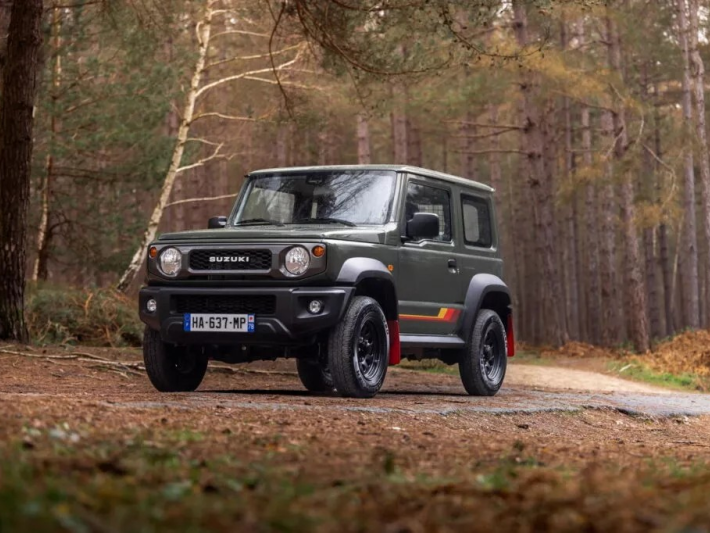
Only 55! Limited-Edition Jimny Coming to France
MichaelJun 20, 2025
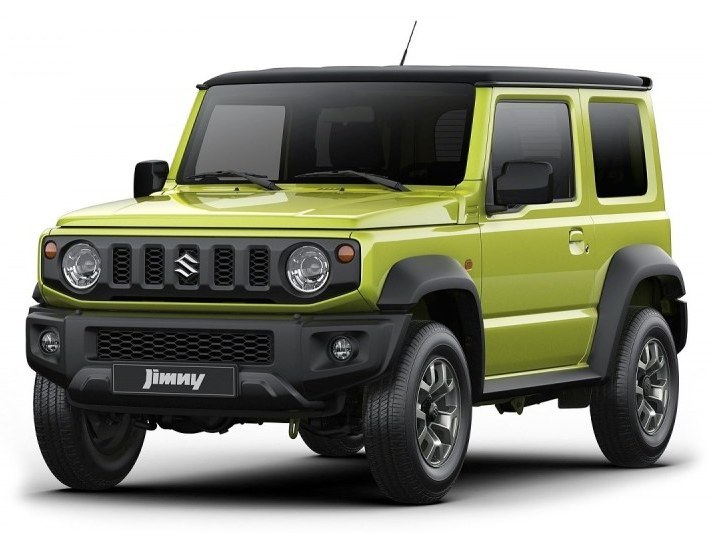
Suzuki Jimny's Trusted 4WD System: Unleash Off-Road Thrills
Kevin WongMay 13, 2025
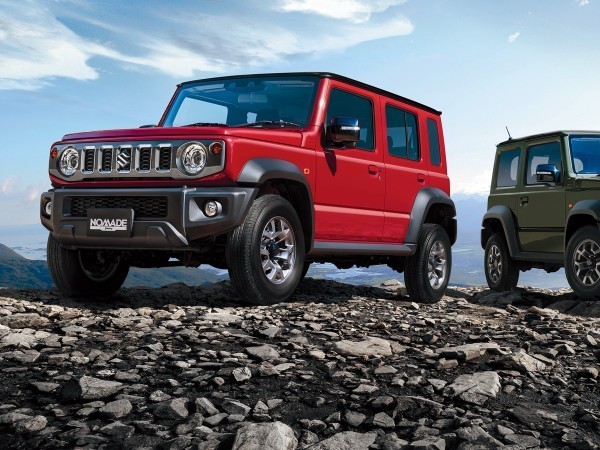
Jimny Nomade Japan released, over 50,000 orders in 4 days, consumers need to wait for 3.5 years
MichaelFeb 5, 2025

Suzuki Jimny Arctic Launch: Limited Time Offer to Save 7000 Ringgit!
Kevin WongNov 18, 2024
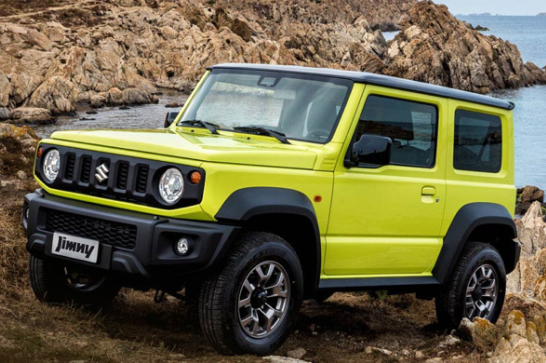
Getting More Expensive, 2024 Suzuki Jimny Starts at RM 174,180. Is it a Financial Wizard?
LienApr 18, 2024
View More












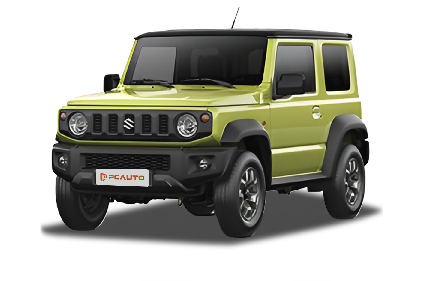





Pros
Cons